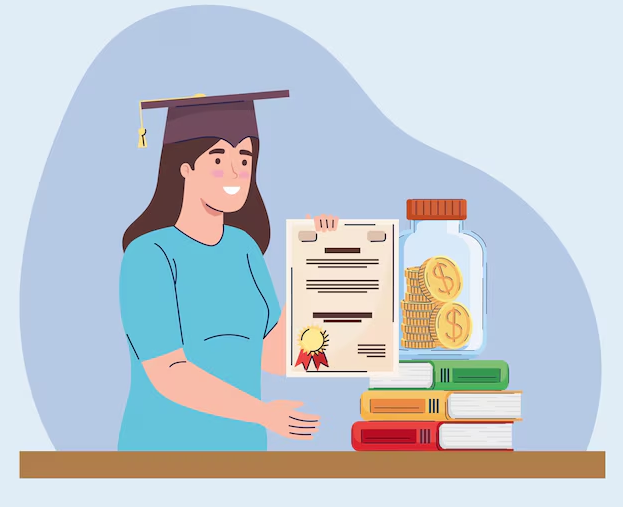Student loans have long been a double-edged sword for millions of Americans. On one hand, they provide essential access to higher education, allowing students to attend universities and colleges they might otherwise be unable to afford. On the other, the burden of repaying these loans can be financially crippling, with long-term consequences that can hinder personal and economic growth.
In response to growing concerns, the U.S. government has introduced new legislation aimed at reforming the student loan system. This article will explore what these changes entail, how they might affect current and future borrowers, and the potential long-term impacts on the U.S. economy.
A New Chapter in Student Loan Reform

The recent legislative changes mark a significant shift in the U.S. student loan landscape. For years, borrowers have struggled with high interest rates, confusing repayment plans, and insufficient borrower protections. The new legislation aims to address these issues by introducing lower interest rates, simplified repayment options, and enhanced borrower protections.
The most notable change is the reduction in interest rates for federal student loans. Previously, many borrowers found themselves locked into high interest rates, sometimes exceeding 6-7%, which compounded their debt over time. The new law mandates a cap on interest rates, with most loans now having rates between 3-5%, depending on the type of loan and the borrower’s financial circumstances. This reduction in interest rates is expected to make loan repayment more manageable and less financially burdensome for millions of Americans.
Another significant change is the simplification of repayment plans. Under the old system, borrowers had to navigate a maze of options, including standard, extended, and income-driven repayment plans, each with its own set of rules and eligibility criteria. The new legislation consolidates these options into a more straightforward framework, making it easier for borrowers to choose the plan that best suits their needs.
Impacts on Current Borrowers
For those who are already repaying student loans, the new legislation offers several potential benefits. Perhaps the most immediate impact will be seen in monthly payment amounts. With the new interest rate caps and simplified repayment plans, many borrowers can expect to see a reduction in their monthly payments. This could free up much-needed income for other expenses, such as housing, healthcare, or saving for the future.
Moreover, the new legislation includes provisions for expanded loan forgiveness options. Under the previous system, borrowers could qualify for loan forgiveness after 20-25 years of consistent payments under an income-driven repayment plan.
However, many borrowers struggled to meet the strict requirements and deadlines associated with these programs. The new law shortens the forgiveness timeline for some borrowers, allowing them to qualify for loan forgiveness after 15-20 years of payments, depending on their income level and loan type.
In addition to these changes, the legislation introduces new borrower protections, aimed at preventing the kind of predatory lending practices that have plagued the student loan industry for years. Lenders are now required to provide clearer information about loan terms and conditions, and borrowers have access to more robust dispute resolution mechanisms if they encounter issues with their loans. These protections are designed to help borrowers make more informed decisions and avoid falling into financial traps that could exacerbate their debt.
How Future Borrowers Will Be Affected
While the new legislation offers immediate relief to current borrowers, it also holds significant implications for future students. One of the key goals of the reform is to make higher education more accessible by reducing the financial barriers that often deter prospective students. By lowering interest rates and simplifying repayment plans, the government hopes to encourage more individuals to pursue higher education without the fear of overwhelming debt.
For future borrowers, the new legislation provides a more predictable and transparent loan process. Students can now enter college with a clearer understanding of what their loan obligations will look like after graduation. This transparency is expected to reduce the anxiety and uncertainty that often accompanies the decision to take out student loans.
Additionally, the new law includes measures to support low-income and underserved students. For example, Pell Grant eligibility has been expanded, allowing more students to qualify for this need-based aid. The maximum Pell Grant award has also been increased, providing additional financial support to students who may not be able to cover the full cost of attendance with loans alone.
These changes are intended to level the playing field and ensure that all students, regardless of their financial background, have the opportunity to pursue higher education. Another important aspect of the new legislation is its focus on financial literacy.
The law mandates that all students receiving federal loans participate in financial education programs designed to help them understand the implications of borrowing and develop skills for managing their finances. This proactive approach aims to equip students with the knowledge they need to make informed decisions about their education and finances, potentially reducing the likelihood of future financial difficulties.
Long-term Economic and Social Impacts
The changes introduced by the new student loan legislation are not only designed to benefit individual borrowers but also to have broader economic and social impacts. By reducing the burden of student loan debt, the government hopes to stimulate economic growth and address some of the systemic issues that have contributed to income inequality and financial instability in the U.S.
One of the most significant potential impacts is increased consumer spending. With lower monthly loan payments, borrowers may have more disposable income to spend on goods and services, which could boost economic activity. Additionally, reduced debt burdens may make it easier for individuals to qualify for mortgages and other types of credit, potentially leading to increased homeownership rates and further stimulating the economy.
The new legislation also has the potential to positively impact social mobility. By making higher education more accessible and affordable, the law could help to close the education gap between different socioeconomic groups. This could lead to a more diverse and skilled workforce, which is essential for the long-term health of the U.S. economy.
However, the success of these reforms will ultimately depend on their implementation and the extent to which they address the root causes of the student loan crisis. While the new legislation is a step in the right direction, it may not fully resolve the underlying issues of rising tuition costs and the broader economic challenges facing many Americans. Therefore, ongoing monitoring and potential future adjustments to the law will be crucial in ensuring that the intended benefits are realized.






